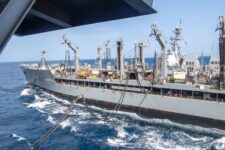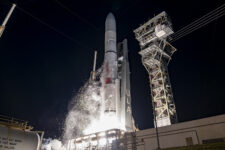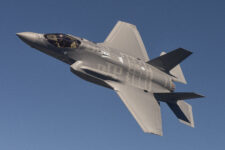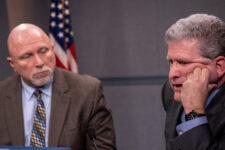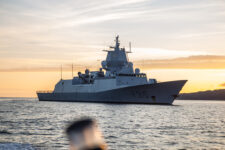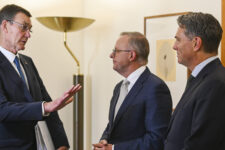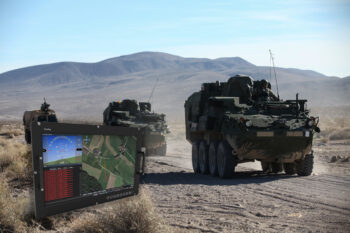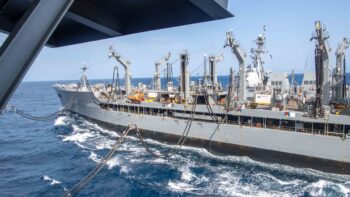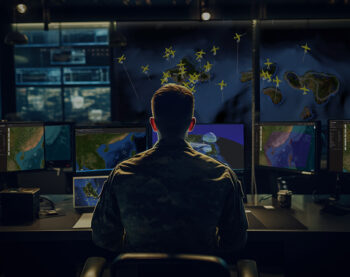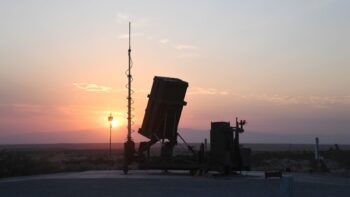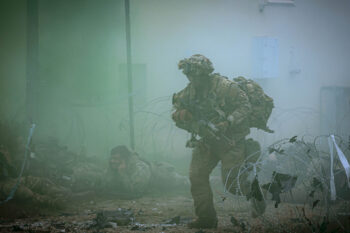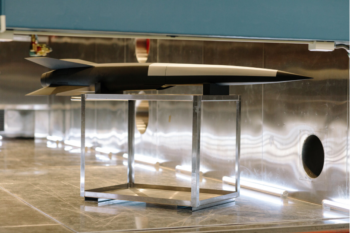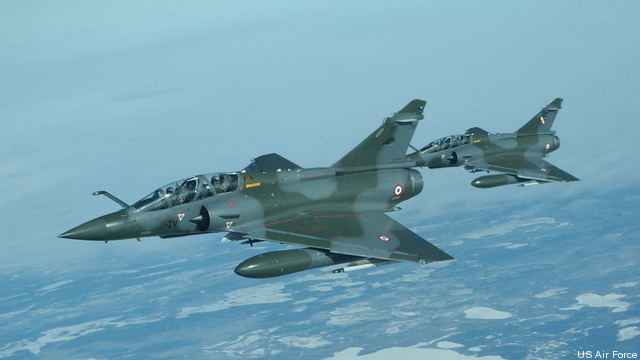
NATIONAL HARBOR: Last year’s Libya campaign revealed painful shortfalls in NATO, including intelligence sharing so molasses-slow that French pilots gave up on waiting for target data from US Predator drones. That’s something the allies are anxious to correct.
“In Libya we got away with it. We made do, we had work-arounds, [but] we were not fighting a sophisticated enemy,” Air Marshal Andy Pulford, the Royal Air Force’s deputy commander for capability, said at the (US) Air Force Association conference here. The next adversary might more effective than Muammar Qaddafi — not a very high bar. Especially, if that enemy is a single nation-state, “they will not have the baggage, the drag, of coalition and interoperability [concerns],” Pulford warned, “and they very quickly will overcome us if we are struggling to get information out.”
One solution, suggested US Air Force Lt. Gen. Frank Gorenc, might be to “develop systems that allow for the machine-to-machine transfer of data” — that is, without waiting for human staff officers to decide on each report. “There’s actually an infrastructure [and] a hardware challenge with the amount of information that we’re generating,” he said.
Gorenc, now director of the Air Staff, also worked on Libya as commander of the Europe-based 3rd Air Force, and he was more sanguine about his experiences than Pulford. “Interoperability for the most part is very good,” Gorenc said Wednesday, though information-sharing is certainly a “challenge.” So is getting one country’s aircraft to fly out of another’s bases without a lot of advance planning: In the Libyan war, “some of the assets quite frankly weren’t in the optimum location,” he said, “which did hinder coalition ops a little bit.”
Fixing these problems requires intensive training and planning. “The ability to operate in a coalition does not just happen,” Gorenc said. Even seemingly mundane functions must be rehearsed. As a squadron commander in Europe in the 1980s, Gorenc recalled, “oftentimes we would land at [allied] bases just so the ground crews would have a training opportunity to look at an [American] F-15, refuel an F-15, put weapons on an F-15.”
During the Cold War, Pulford said skeptically, “we said we were interoperable; we could just about get away with refueling each others’ aircraft.” Inter-allied planning was less about working together than simply staying out of each others’ way, he said: “We were fighting in our swim lanes. We had Germany divided up.”
The problem, Pulford said, is less with the technical and tactical operations of the aircraft themselves than with the headquarters, networks, and planning processes that orchestrate their operations. “The airplane, the [sensor] ball underneath, the ability to laser one another’s bombs… that works reasonably well,” he said. What we need to work on now, he went on, is the higher level: “how do we form the plan together, how do we do command and control together, how do we ensure we can share that information?”
France will soon a tri-national workshop on these issues soon in Lyon, said the third speaker, French Air Force Maj. Gen. Gilles Lemoine, director of the Center for Strategic Aerospace Studies (CESA).
France will soon host a tri-national workshop on these issues, said the third speaker on the panel, French Air Force Maj. Gen. Gilles Lemoine, who is director of French military’s Center for Strategic Aerospace Studies (Centre d’Etudes Stratégiques Aérospatiales, CESA). The US, Britain, and France will each send ten officers to Lyons to work on interoperability. “Two of the greatest hurdles…are integrated C2 [command-and-control] and the sharing of information,” said Lemoine. “We will start from the Libya experience we shared together.”
What is critical, Pulford added, is for the European allies to beef up their ability to act without the level of US assistance they had in Libya. “I see the US quite rightfully refocusing [on the Pacific], he said. It’s time for the UK and other European allies, “to start taking some of the weight on behalf of the US,” he said — “to look after our part of the garden.”
Navy to sideline support ships, re-assign mariner crews amid worsening workforce shortages
Rear Adm. Philip Sobeck, commander of Military Sealift Command, said the initial plans would be executed by the end of 2026.
